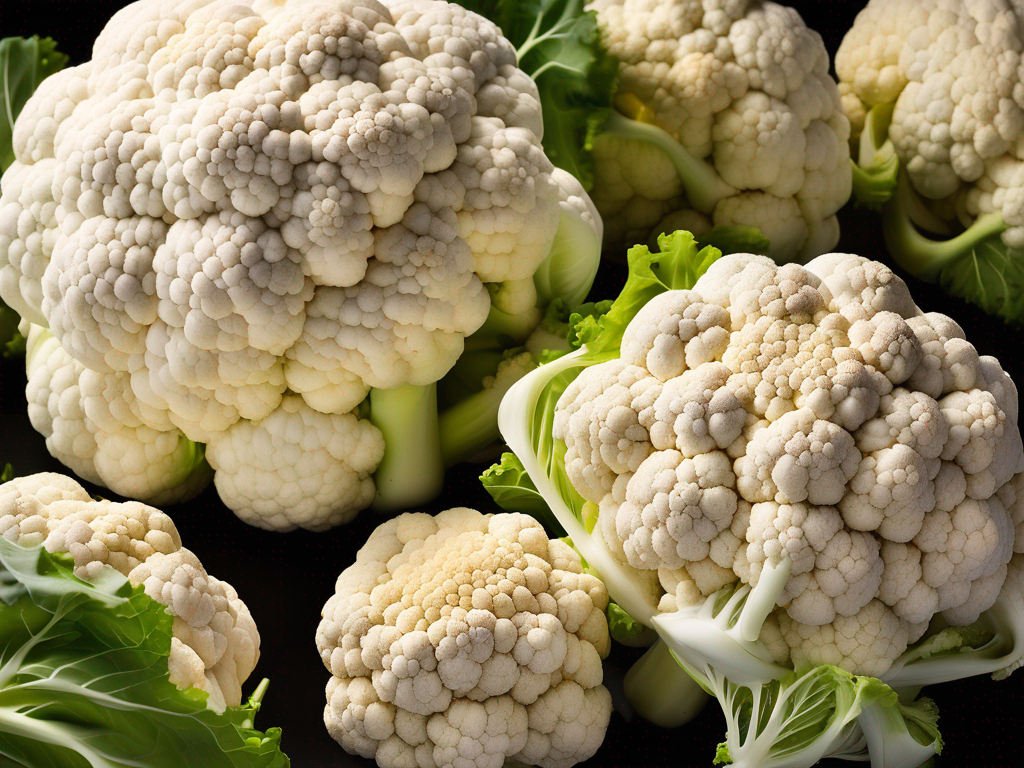
Preserving Cauliflower: Easy Tips for Longer Shelf Life
Get Your Free Food Safety Cheat Sheet
30 most common foods with instant answers. Print it and stick it on your fridge—completely free!
Preserving Cauliflower: Easy Tips for Longer Shelf Life
Cauliflower is a versatile and nutritious vegetable that can be enjoyed in various dishes, from stir-fries to salads. However, like many fresh produce items, cauliflower has a limited shelf life. To extend the lifespan of your cauliflower and prevent food waste, it's important to know how to properly store and preserve it. In this blog post, we'll explore some easy and effective ways to preserve cauliflower for a longer shelf life. (Cauliflower)
Understanding Cauliflower Shelf Life
Before we delve into the preservation methods, let's first understand the typical shelf life of cauliflower. When stored correctly, fresh cauliflower can last for up to one to two weeks in the refrigerator. However, improper storage can lead to wilting, discoloration, and loss of flavor.
Factors Affecting Cauliflower Shelf Life
Several factors can impact the shelf life of cauliflower, including:
- Temperature: Cauliflower should be stored at a consistent temperature to prevent spoilage.
- Moisture: Excess moisture can lead to mold growth, while dry conditions can cause dehydration.
- Air Exposure: Cauliflower should be properly sealed to prevent exposure to air, which can accelerate spoilage.
- Contamination: Cross-contamination with other foods can introduce bacteria and reduce cauliflower's freshness.
Easy Ways to Preserve Cauliflower
1. Refrigeration
Refrigeration is the most common and effective method for preserving cauliflower. Follow these steps to store cauliflower in the refrigerator:
- Remove the cauliflower leaves and trim the stem.
- Place the cauliflower head in a breathable plastic bag or airtight container.
- Store in the vegetable crisper drawer of the refrigerator.
- Check the cauliflower periodically for any signs of spoilage and use it within one to two weeks.
2. Blanching and Freezing
Blanching cauliflower before freezing can help retain its texture and flavor. Here's how to blanch and freeze cauliflower:
- Cut the cauliflower into florets.
- Blanch the florets in boiling water for 3 minutes.
- Transfer the blanched cauliflower to an ice bath to stop the cooking process.
- Drain the cauliflower thoroughly and pat dry.
- Place the cauliflower in freezer-safe bags or containers.
- Label the bags with the date and store in the freezer for up to 6 months.
3. Pickling
Pickling is a great way to preserve cauliflower while adding a tangy flavor. To pickle cauliflower:
- Cut the cauliflower into small florets.
- Prepare a pickling solution of vinegar, water, salt, and spices.
- Bring the pickling solution to a boil.
- Place the cauliflower in sterilized jars and pour the hot pickling solution over the cauliflower.
- Seal the jars and store them in the refrigerator for several weeks.
4. Dehydrating
Dehydrating cauliflower is a method that removes moisture, extending its shelf life. To dehydrate cauliflower:
- Cut the cauliflower into small pieces or florets.
- Blanch the cauliflower briefly.
- Arrange the cauliflower on a dehydrator tray in a single layer.
- Dehydrate at a low temperature (around 125°F) until the cauliflower is completely dry.
- Store the dehydrated cauliflower in airtight containers in a cool, dry place.
Safety Tips for Preserving Cauliflower
- Always wash cauliflower thoroughly before preserving it.
- Use clean utensils and containers to prevent contamination.
- Label all preserved cauliflower with the date to track freshness.
- Discard any cauliflower that shows signs of mold, sliminess, or off odors.
- When in doubt, err on the side of caution and throw out questionable cauliflower.
Conclusion
By following these easy methods for preserving cauliflower, you can enjoy this versatile vegetable for an extended period while reducing food waste. Whether you choose to refrigerate, freeze, pickle, or dehydrate cauliflower, proper storage and handling are key to maintaining its freshness and flavor. Experiment with different preservation techniques to find the method that best suits your preferences and cooking needs. With a little effort and care, you can make the most of your cauliflower harvest and enjoy this nutritious vegetable year-round. (Cauliflower)
Authoritative Food Safety References
These agencies and university labs inform every tip and health precaution we publish.
USDA FoodKeeper – Cold Storage Guidelines
Official refrigerator, freezer, and pantry timelines maintained by the U.S. Department of Agriculture.
Visit USDA FoodKeeperFDA Produce Safety Rule & Grower Guidance
Field-to-fridge handling practices that prevent contamination of fruits, vegetables, and leafy greens.
Visit FDA Produce SafetyCDC Foodborne Illness Prevention Hub
Surveillance-backed guidance on pathogens, symptoms, and steps to reduce foodborne illness risk.
Visit CDC Food SafetyUC Davis Postharvest Technology Center
University research detailing optimal storage atmospheres for produce after harvest.
Visit UC Davis PostharvestPenn State Extension – Home Food Preservation & Safety
Peer-reviewed extension bulletins on safe canning, chilling, and reheating practices.
Visit Penn State ExtensionGet Your Free Food Safety Cheat Sheet
30 most common foods with instant answers. Print it and stick it on your fridge—completely free! Want more? Upgrade to the complete guide with 70+ foods.
Scan your food directly and get instant safety info using our AI-powered camera feature.